I love starting my day with a steaming cup of matcha green tea. Read on to learn how to make this energizing, antioxidant-packed drink at home!
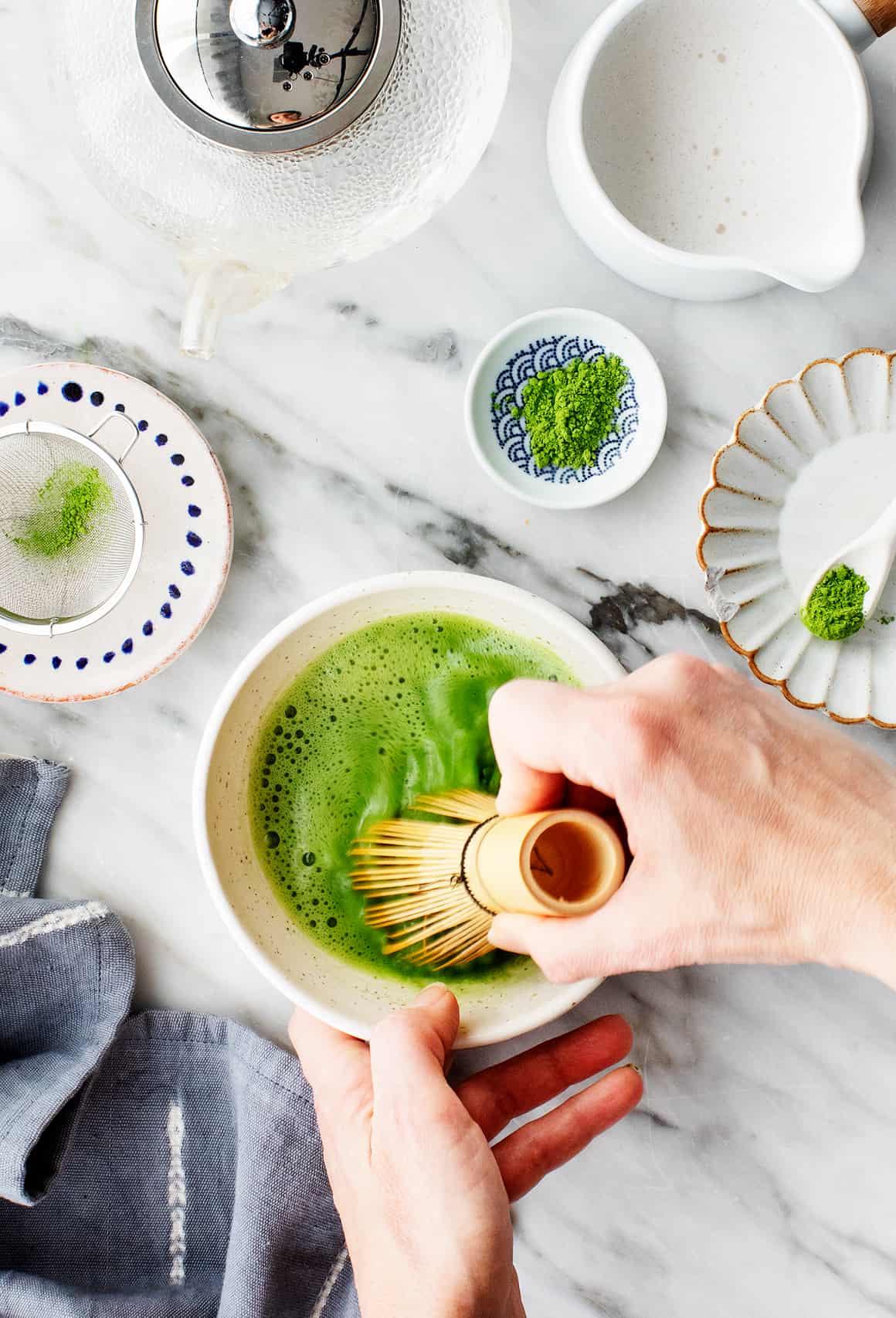
A few years ago, matcha started popping up everywhere – in lattes, ice cream, smoothies, icing, and more. While I’ll never say no to a matcha doughnut, today I want to focus on the simplest way to enjoy it: by whisking it into hot water to create a frothy, nourishing tea. I’ve loved drinking matcha this way since Jack and I took our first trip to Japan years ago, and I still make myself a cup almost every morning. To me, it’s the perfect way to start the day. It’s energizing and calming both at once, and above all else, it’s delicious.
What is Matcha?
If you’re not familiar with matcha, it’s a Japanese green tea powder made from finely powdered dried tea leaves. It has a slightly bitter, vegetal taste and a vibrant green color that results from the leaves’ high chlorophyll levels. It’s been the cornerstone of traditional Japanese tea ceremonies for centuries, but it recently became popular in the US because of its health benefits.
Regular green tea is already touted as an antioxidant powerhouse, but matcha has even more benefits. Here’s why: when you make other forms of green tea, you steep the leaves in hot water and then discard them. When you make matcha, you whisk the powder into hot water or milk. As a result, you actually consume the entire tea leaf when you drink it! The antioxidants it contains may lower blood pressure, reduce your risk of heart disease, and even boost your metabolism.
So what about caffeine? Well, matcha does contain more caffeine than regular green tea, but it doesn’t give you a buzzy rush like coffee. It leaves me feeling energized and focused, but still calm.
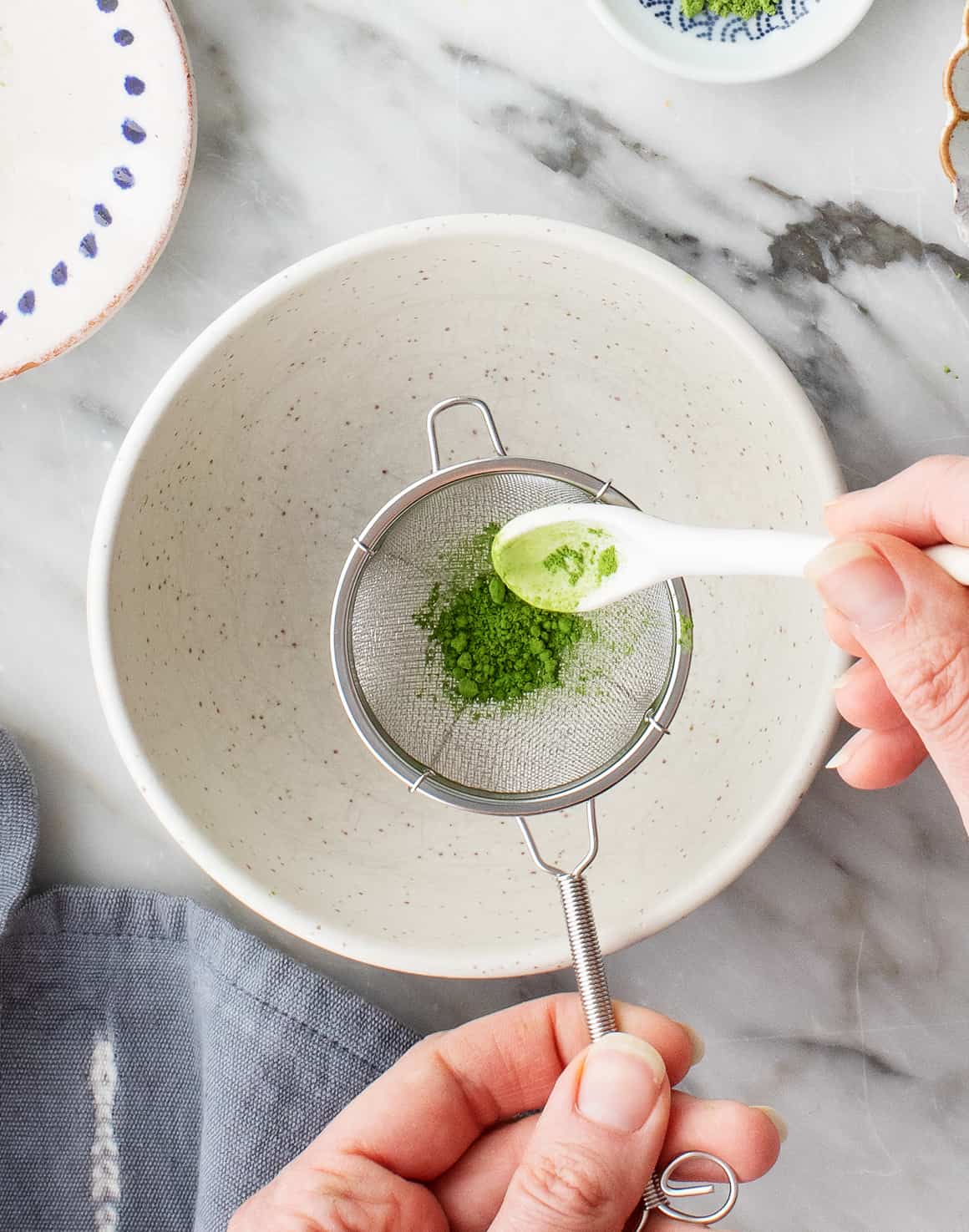
What Is the Best Matcha Powder?
Buying matcha for the first time can be confusing – there are so many brands, and they vary widely in quality. The most significant distinction is between ceremonial and culinary grade matcha. The ceremonial kind will be pricier – it’s made from the youngest tea leaves and has a mellow flavor.
I recently tested out all of the top matcha powders. I tried them as tea with water, in lattes, and in baking recipes. I found that my favorite for drinking matcha is Ippodo Tea Ummon. I’ve used it for years, and I love its rich, earthy flavor with only a bit of bitterness. It mixes well too!
Get the Ippodo Tea Ummon on Amazon for $30.99, or check out some of the other matcha powders I tested to find the best one for you!
Helpful Tips
- It doesn’t last forever. Matcha doesn’t have a particularly long shelf life. Once you open it, use it within 2 months for the best color and flavor. I recommend buying it in small quantities and storing it in the fridge to preserve freshness.
- You might want a matcha whisk. If you make matcha often, I recommend investing in a bamboo whisk called a chasen (pictured here). Its special design breaks up clumps and creates a frothy layer of foam on top of the tea. If you don’t have one, use a regular whisk or an electric milk frother instead. Whisking or stirring with a fork or spoon will not work here.
- Sweeten to taste. Matcha’s grassy, umami flavor can be an acquired taste. If you’re new to making it, don’t hesitate to add a few drops of maple syrup or honey. You also might want to sweeten your tea if your matcha powder is particularly bitter.

How to Make Matcha Green Tea
You’ll find my full matcha green tea recipe and measurements below, but because there are a few tricks to making matcha, I wanted to break it down step by step. Here’s what you need to do:
First, sift it into a small bowl or mug. Matcha clumps very easily, so I always recommend sifting it before you add any water. Otherwise, it will be difficult to get the tea to disperse evenly in the liquid, and your drink will be lumpy.
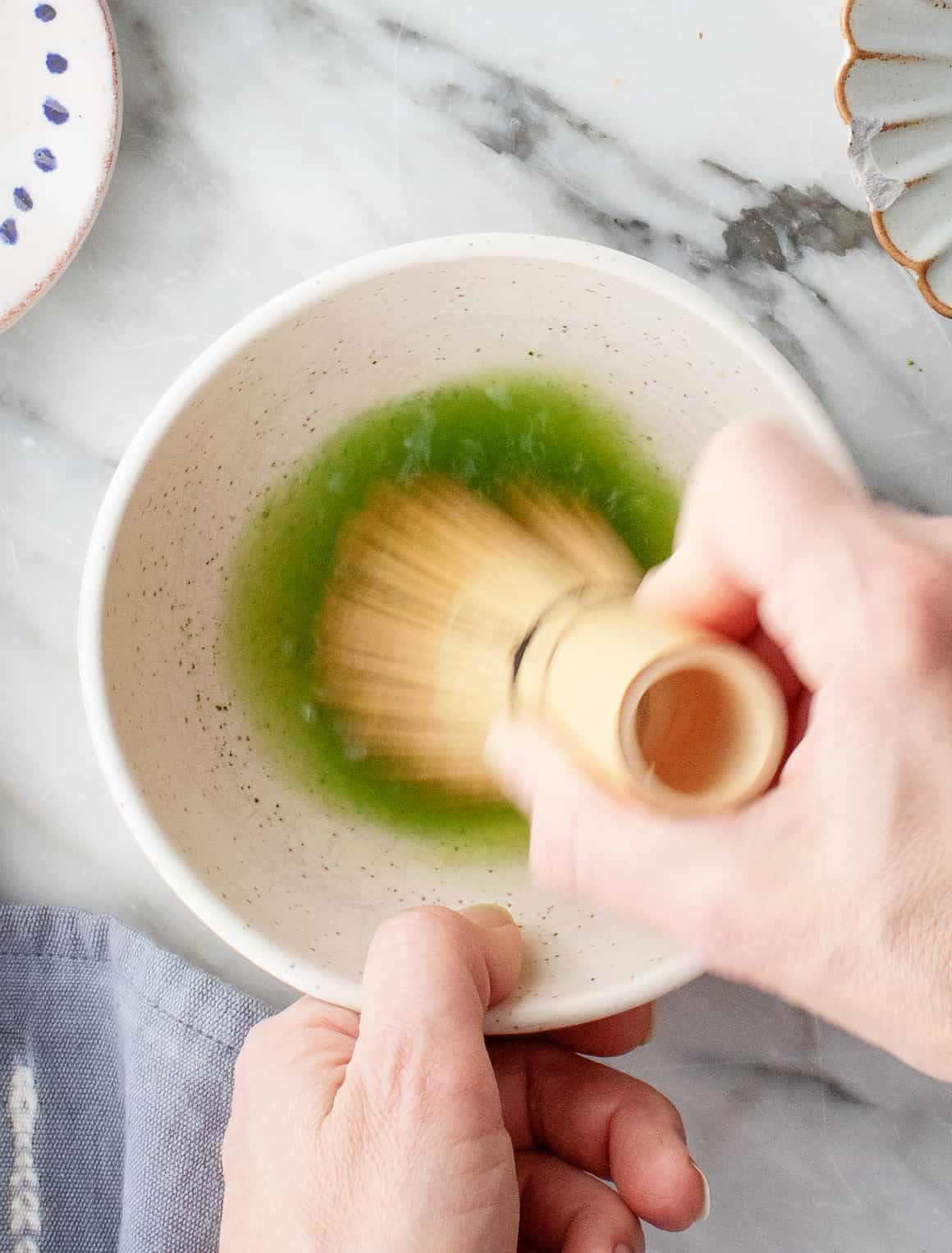
Then, pour in a small amount of hot water, and whisk. But wait! This isn’t the circular whisking required for making baking recipes or scrambled eggs. Instead, whisk vigorously from side to side – either directly back and forth or in a zigzag pattern – to evenly disperse the powder in the water and create a foamy layer on top. If you whisk in a circular motion, your tea won’t foam.

Finally, top it off with more hot water or steamed milk. Traditional matcha green tea is made with just green tea powder and water, but you can also easily make a latte by finishing your drink with steamed milk. I love to make mine with almond milk, coconut milk, or homemade oat milk. Whisk again until foamy, sweeten to taste, and enjoy!
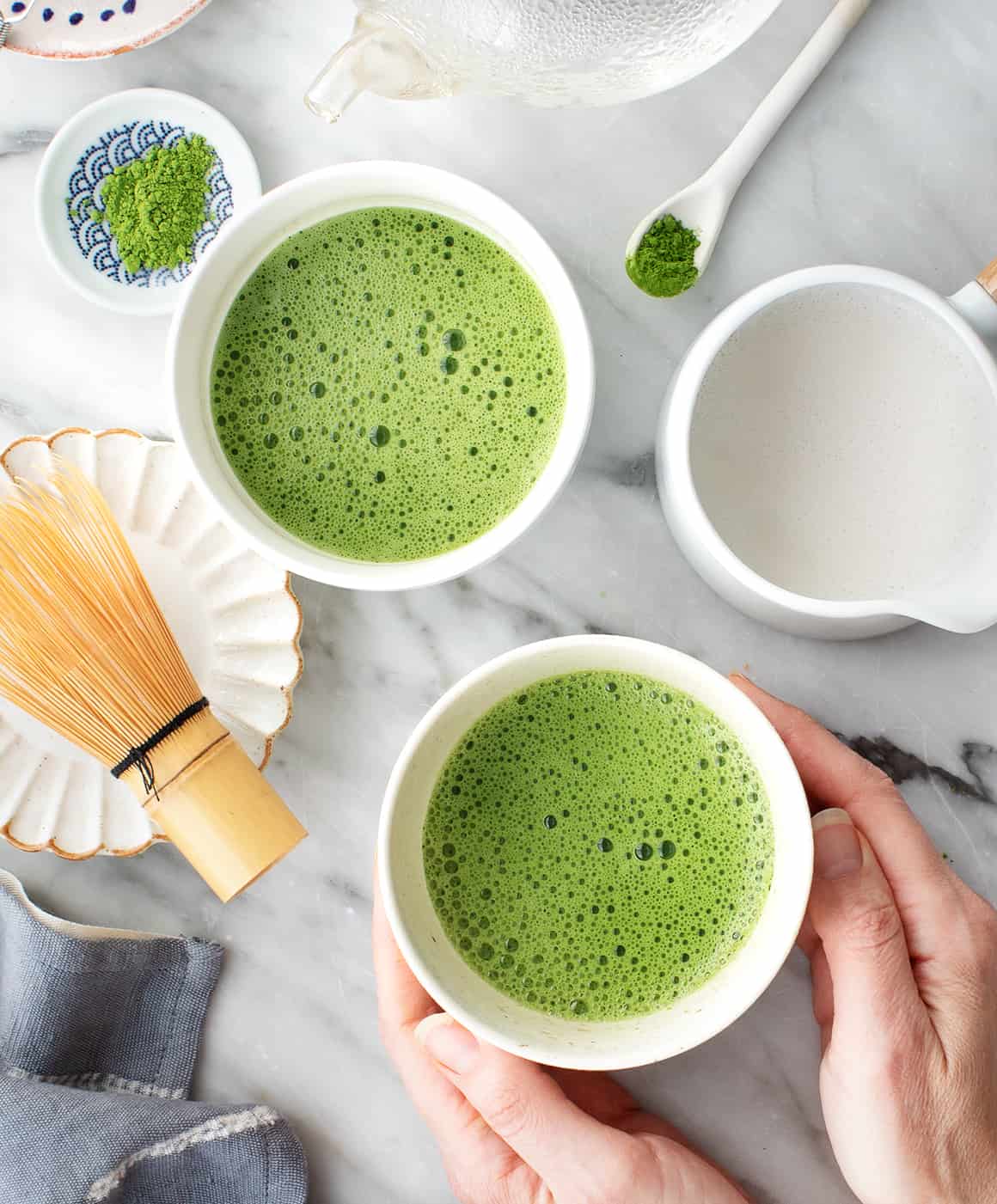
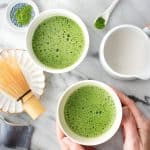
How to Make Matcha
Equipment
- Bamboo Whisk (this is what I use for zero matcha chunks!)
- Small Bowl (stoneware ones like these are best)
- Fine Mesh Strainer (for sifting out clumps)
Ingredients
- ¼ teaspoon matcha
- 2 ounces hot water, 175°F is ideal
- 6 ounces additional hot water or steamed milk of choice, almond milk, oat milk, coconut milk, dairy milk, etc.
- Maple syrup, honey, or other sweetener, optional
Instructions
- Sift the matcha into a mug or small bowl to get rid of any lumps.
- Pour in the 2 ounces of the hot water. Using a matcha whisk or small regular whisk, whisk briskly from side to side until the matcha is fully dispersed and there is a foamy layer on top.
- Add the remaining 6 ounces hot water or steamed milk and whisk again until foamy. Sweeten to taste with maple syrup, honey, or your preferred sweetener, if desired.






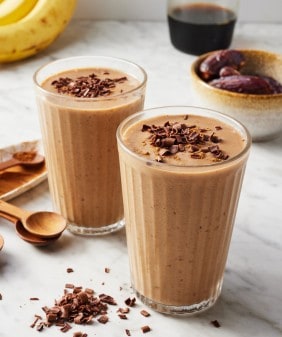
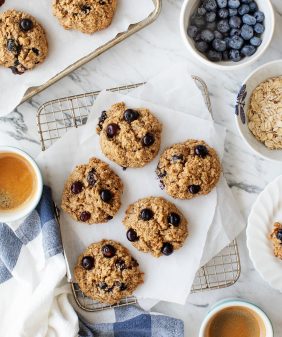






Absolutely love this matcha recipe. If you are interested in reading my blog ‘The Incredible Benefits of Matcha & Popular Matcha Products’.
Then visit https://www.foodforfoodies.co.uk/blogs/foodies-blog/the-incredible-benefits-of-matcha-popular-matcha-products
Oh great, i never heard about all benefits and also its recipe .i surly made Matcha tea .Because i’m very health conscious. i really like the way you describe it all.
I’m excited to making Matcha tea instead of my green tea or regular milk tea. i really like the way you describe it all.
How about making a cold drink, with either water(iced tea) or oat or almond milk, like an iced latte?
Hi, you might like our iced matcha latte recipe!
Try it even with Coconut milk and Pineapple juice.
It is amazing
So fortunate that after recently testing all the top matcha powders, the one you chose happened to the pm you’ve used for years!
How many cups of matcha are equal to drinking the regular stepped tea tea of 5-6 daily ?
Matcha, which is powdered green tea, packs more caffeine than other green teas. In detail, matcha has about 18.9 to 44.4 mg of caffeine per gram, while other green teas have between 11.3 and 24.67 mg per gram.
When you compare this to regular brewed teas like black or green tea, matcha comes out on top in caffeine content. Since one teaspoon of matcha weighs around 2 grams, you might get up to 88.8 mg of caffeine in just one serving. That’s way more than what you’d get from the same amount of regular steeped green tea.
So, if you’re looking at caffeine, having one or two cups of matcha could be like drinking five to six cups of regular green tea. This shows why matcha is such a good pick-me-up but also why it’s important to not have too much, especially if caffeine tends to affect you strongly.
I’m wanting to try Matcha instead of my usual black tea. Can I sweeten the Matcha with Stevia instead of honey?
Yeah, you can totally use stevia to sweeten your matcha instead of honey! Stevia is a great choice if you’re looking for something that doesn’t add calories or sugar.
When I switched from black tea to matcha, I liked using stevia because it didn’t add extra calories or sugar, which is great for people watching their sugar intake or following diabetic or keto diets. Just keep in mind that stevia is way sweeter than honey, so start small and add more to taste.
You can add stevia to your matcha the same way you would with any sweetener: mix it into the powder before adding water, or stir it into the prepared matcha. This way, you can enjoy your matcha’s energy and flavor, but with the sweetness you prefer and without the extra calories!